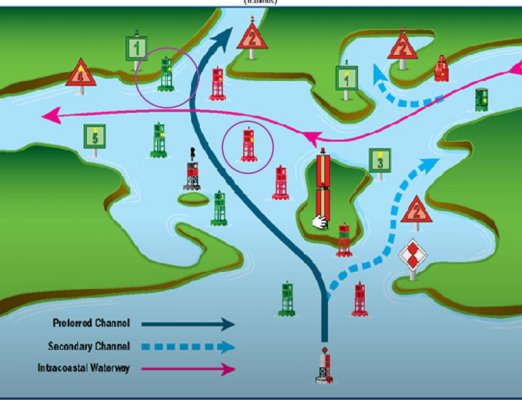We generally do dock at marinas rather than anchor so some follow up to the comment earlier about getting there early.
First, when cruising we've fallen into a schedule where we generally leave the dock around 7:00 AM. That generally, but not always, gets one the calmest part of the day, the coolest, and the least congested. It also does have the benefit of getting one to the next destination earlier or covering a greater distances. Getting to a destination earlier does two things. It might help you avoid docking issue, but more, it allows you to enjoy the new stop that same day.
Now, as to 2:00 or noon, I'm assuming that he's referencing getting assigned a good slip. Places that are crowded and don't take reservations that is definitely an issue. Same issue in crowded anchorages. However, the vast majority of marinas do take reservations. We always follow up on ours too, the day before. Plus we touch base with the dockmaster while on the way. We let them know our expected time and let them know if anything is changing. Then rather than pull up to the dock waiting for help, we contact as we head in so they can be prepared for us. We have the marina pulled up so if they describe the dock and slip we can visualize it. That way there is no wondering where we're supposed to go or the space being too small. 95% of the time as a transient we end up with side tie. The more you communicate, the nicer you are, the better things will go. Plus then return trips are even easier.
But then we don't go for the cheapest dock either. Often there is a reason it's cheap and the spot you get assigned is too shallow or has boards sticking out or other issues. Doesn't mean the most expensive. Do some research on the marinas in the areas you're headed. We've docked between 400 and 500 nights in the past two years and 99% have worked out well. We've not found more than 8 or 10 areas in which we realized in advance the marinas were inadequate. Those are the times we've anchored. We've also gotten many referrals from one marina to another later on the trip or from other boaters and using those often opens doors quicker.
It is worth the time to study the areas you intend to cruise and study the marinas and anchorages in detail. Use multiple sources. That way there will be no surprises. And it won't be so important what time you arrive. We've arrived at several after hours but never without communicating with them in advance and almost always without problems.
Be careful how you describe your boat too. A Grand Banks 53 is not 53'. It's 58' with a 17'9" beam and 4'9" draft and for expedience I'd describe as 58', 18' beam, 5' draft. But you say a Grand Banks 53 and you may well get sandwiched in a space you don't fit. With platforms and pulpits many boats are now 5' or more beyond their stated size. A Fleming 58 is 65'5".
We've found time at marinas to be pleasant 98% of the time. But then we were prepared. The marina that had a bar on the dock open until 2 AM didn't surprise us. Or the one by the train track. Or the morning ferry traffic.


